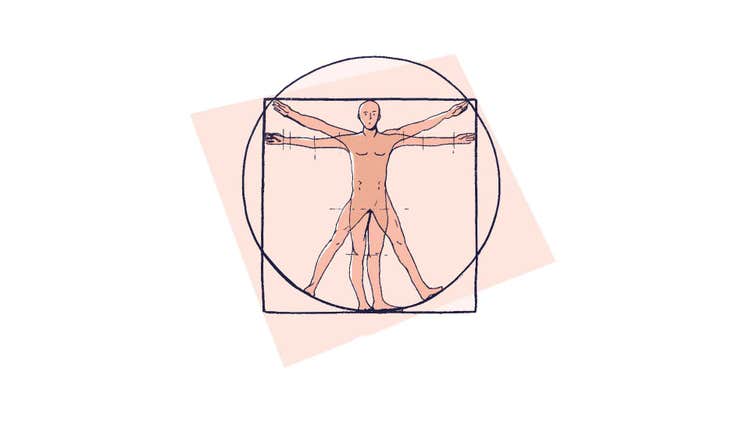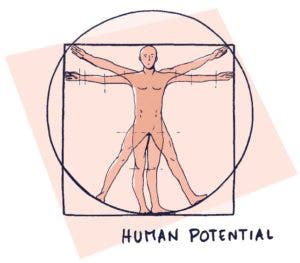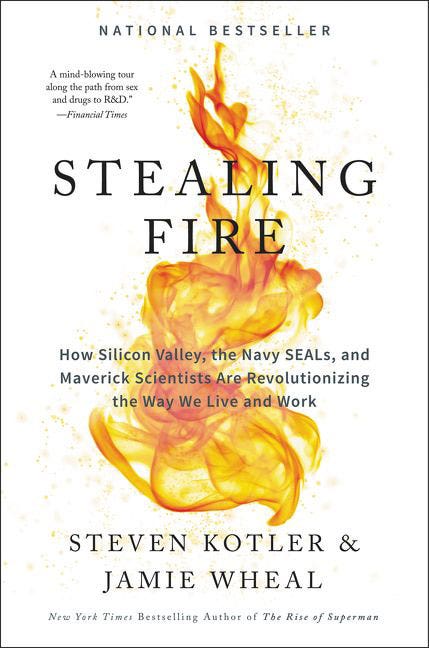Flow Genome Project’s Jamie Wheal Rethinks Human Potential and the Power of Presence


“Our goal is to look at the neuroscience of why” people have been pursuing non-ordinary states of consciousness for millennia, says Jamie Wheal, co-founder and executive director of the Flow Genome Project (FGP). Flow states, meditative and contemplative states, and psychedelic states have “tons of baggage wrapped around them, tons of misinformation, tons of mythologies,” says Wheal, and FGP wants to understand how these states work in terms of our bodies and brains.
“We consider a peak performance to be when you feel your best and you perform your best across a range of internal and external challenges,” Wheal explains. “That could be as simple as being a more patient and compassionate parent, or being a more innovative and creative business leader, or being a more effective athlete in high-performance situations. When the going gets tough, what happens?”
24Life Editor-in-Chief Lashaun Dale recently spoke with Wheal to find out how the Flow Genome Project considers the topic of human potential, the future of the body and our ongoing evolution.

Lashaun Dale: Why the fascination with peak experiences?
Jamie Wheal: I launched Flow Genome Project with Steven Kotler, a science journalist and athlete who was and is deeply, passionately interested in the neuroscience underneath states and experiences. My passion is a combination of the developmental psychology—what’s happening inside people as they have these experiences—and the real-world experiences. I have a background in mountain guiding and various other kinds of adventure sports and activities, and I’m very interested in seeing what happens [when people are in these experiences].
Steven and I wanted to take the ideas that were being pioneered in the extreme, in the sense of military special operations and extreme action sports, and then bring them to the mainstream. We believe that there are lots of really fun, cool, interesting ways to have experiences that are sort of rare and precious but also can put gas in your tank for the every day that we all have to live.
Think of it a little bit like when the Apollo astronauts took that picture of Earth from the orbit of the moon, with the sun coming up, rising behind our little blue marble. That played a meaningful part in launching the entire ecological and sustainability movement of the 1970s [with that image]. … We can’t all buy a ticket to the moon, no matter how fast Elon Musk builds rockets. But instead of astronauts or cosmonauts, we can become psychonauts. If we can experience, basically, unfiltered reality, then the ability for us to shift our perspective in a positive way is an important step in expanding how much we care and how much good we can do.
LD: When you think about the future of the body and our human potential, what comes to mind for you?
JW: Any time we consider the specific term human potential, I always think of George Leonard, who coined the term and was one of the unofficial co-founders of the Esalen Institute. He came up with that idea to typify everything that was happening in the ’60s and ’70s. On the other side of the coin, I think of Leonardo [da Vinci’s] Vitruvian Man, sort of perfected man—probably the most famous visual representation of that.
What happens when we can balance head and heart? What happens when we can balance masculine and feminine? What happens when we can balance doing and being? What happens when we can balance body and mind? For a lot of human history, we’ve been lopsided geniuses and demons. Mark Zuckerberg’s sister said a few years ago, “Family, health, friends, love and work. Pick three.” These are the kind of hard, ugly trade-offs that depict how we’re living imbalanced lives.
Human potential in the 21st century is one of the first opportunities for us to finally learn to be integrated, balanced humans and, at the same time, embrace the market and entrepreneurship, as well as meditation and spirituality. There’s just no room for skipping steps anymore.
LD: Imagining we live in that space of our expanded human potential, how does it influence our ability to innovate and create a different world?
JW: In “Stealing Fire,” Steven and I share four foundational qualities of intentional and productive non-ordinary states, and we called it STER. STER stands for selflessness, timelessness, effortlessness and richness. Each quality has a very cyclical, neurobiological method, why it happens or why we experience it that way—but the last one, richness, is short for information richness.
One of the most consistent, subjective reports of people who experience flow states or any of these other big experiences is, “I was able to innovate, problem-solve, see things more clearly, come through with breakthrough insights at a factor anywhere from two times to five times to 10 times what I do in my normal frame of mind.”
We are currently doing a study with Deloitte focusing on the role of flow states in organizations. John Hagel at Deloitte Center for the Edge said that teams that are in flow are consistently the ones out-innovating their industries and competition. There was a study a couple of decades ago at Stanford that found that even using micro-doses (sub-perceptual threshold dosages) of psychedelics led engineers who were all working on hard problems for at least six months to 12 breakthroughs, three patents and several hundred million dollars’ worth of marketplace innovation.
Everything we’re facing these days is complex, chaotic problem sets. One of the only ways for us to solve them is to actually put ourselves at a level of computation, decision-making and creativity that is at least or, ideally, even more complex than the problem we’re trying to solve. Peak states heighten all the problem-solving tools, including pattern recognition, the access to increased data, the connectivity between different parts of our brain, and the ability to come up with novel insights. This is the turbo button we need to solve our way into a livable future.

LD: You’ve spoken about programmable states. What are they?
JW: I literally mean paint-by-numbers instructions. You can say, “Hey, here’s 10 steps. Do them in this sequence.” You can do these things intensely for a long period of time. If you want to do them a little less intensely and get your results a little quicker, combine them. If any of them give you any issues for any reason—just don’t do that one and know that you’ll have to do another one a little harder, a little longer, and you can tune your reality.
Robert Anton Wilson, the science-fiction writer, said, “Consciousness is chemical.” And at the time, back in the ’60s and ’70s, he was talking about hippies and substance use. But at this point in time, we can say, “Hey, this is also our internal neurochemistry,” and learn the different ways you can shift neurotransmitters in your brain and body so that you can pretty much program consciousness. That’s a super-interesting breakthrough.
LD: What are you exploring currently in the realm of future and human potential futurescape?
JW: The role of the vagus nerve and its role in everything. I think it will be the microbiome of the next decade, as far as how much press and research it generates and the findings.
I’m also fascinated with the endocannabinoid system in our brain. It interacts with cannabis products these days, but it’s 30 million years old and it’s present in sea sponges. It predates humans—and the endocannabinoid system is arguably our second immune system. It is a neurotransmitter network. It deals with our organs. It deals with information. It deals with blood pressure. It deals with so many things, which is, in part, why medical cannabis has had so many potential inroads.
I have a strong hunch that there’s some interconnectivity between vagal nerve tone, cardiac coherence and the endocannabinoid system because their mechanisms of action seem similar and related across all domains of health.
Last, I’m very interested in the possibilities and potentials of waking delta wave activity. In most scientific, meditation and flow research, the focus is on alpha and beta wave activity because that’s where groovy, soft and mellow thoughts come from. Sleep researchers mostly focus on REM because that’s when we’re dreaming.
Delta wave activity normally just occurs in deep, dreamless sleep. Yet there’s a tiny little subset of practiced inactivity that gets you into waking delta. And waking delta is almost the equivalent to kind of a backdoor route to lucid dreaming, which is back to when you’re getting into information and having insights and access to heightened creativity. This is super, super interesting to me and is the gist of some of my current research for my next book.

LD: What is your next book about?
JW: My next book is called “Recapture the Rapture.” The world seems like it’s been hijacked by a bunch of crazy people these days—all around the world. Why is it that the incredible majority of us who just want peace, prosperity and a chance for our kids to live better lives than we have, why are we all silent while so many in more extreme positions seem to be kind of taking over the steering wheel?
[The book title is] kind of a bit of a play on words. It’s like the uppercase Rapture, the end of days. If we are going to have one of those reflection points, how do the best of us who seem to lack all conviction—how do we reclaim our passionate intensity? How do we reclaim our lowercase rapture? The idea is to write a chapter we all can live into. What tools do we have? We’re going to focus specifically on respiration, movement, sexuality and music as ways that people can program their own healing from trauma, access to inspiration and deep connection with those around them.
We’re trying to make it tractable and actionable so people all around the world will have the courage and the clarity to know what our path is and heal enough of the places we’re banged up to remember what we’re all here to do, and then go do it.
LD: Do you think it’s true that you cannot build a future that you cannot imagine?
JW: Yeah, I totally agree with it. In fact, I think Alice Walker even took that a step further and she said, “Keep in mind the present you are creating. It should be the future you want.”
About Jamie Wheal
Jamie Wheal, Executive Director of the Flow Genome Project and co-author of the Pulitzer Prize-nominated global bestseller, “Stealing Fire,” is an expert on peak performance and leadership, specializing in the neuroscience and application of Flow states.
Jamie has advised everyone from the U.S. Naval War College and Special Operations Command, the athletes of Red Bull, and the owners of NFL, NBA, MLB and Premier League teams, to executives at Google, Deloitte, Goldman Sachs, Cisco, The Bohemian Club and the Young Presidents’ Organization.
AboutFlow Genome Project Flow Genome Project is an interdisciplinary, global organization committed to mapping the genome of Flow by 2020 and open-sourcing it to everyone. We are a collection of world-class academics, athletes and artists dedicated to taking Flow from the extreme to the mainstream. We advance Flow science and we train individuals and organizations to harness Flow in their lives and work.
Video credit: Courtesy Flow Genome ProjectPhoto credit: Digital Vision, Thinkstock; courtesy Flow Genome Project; image_jungle, Thinkstock